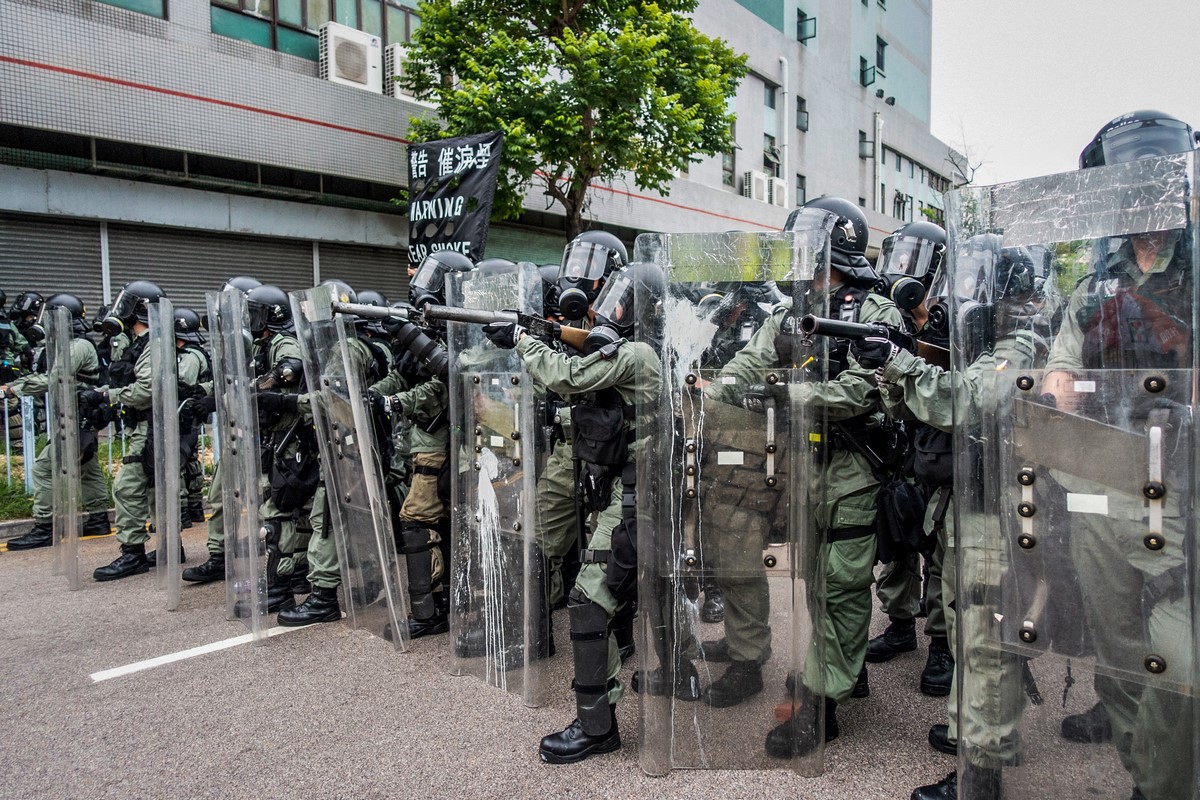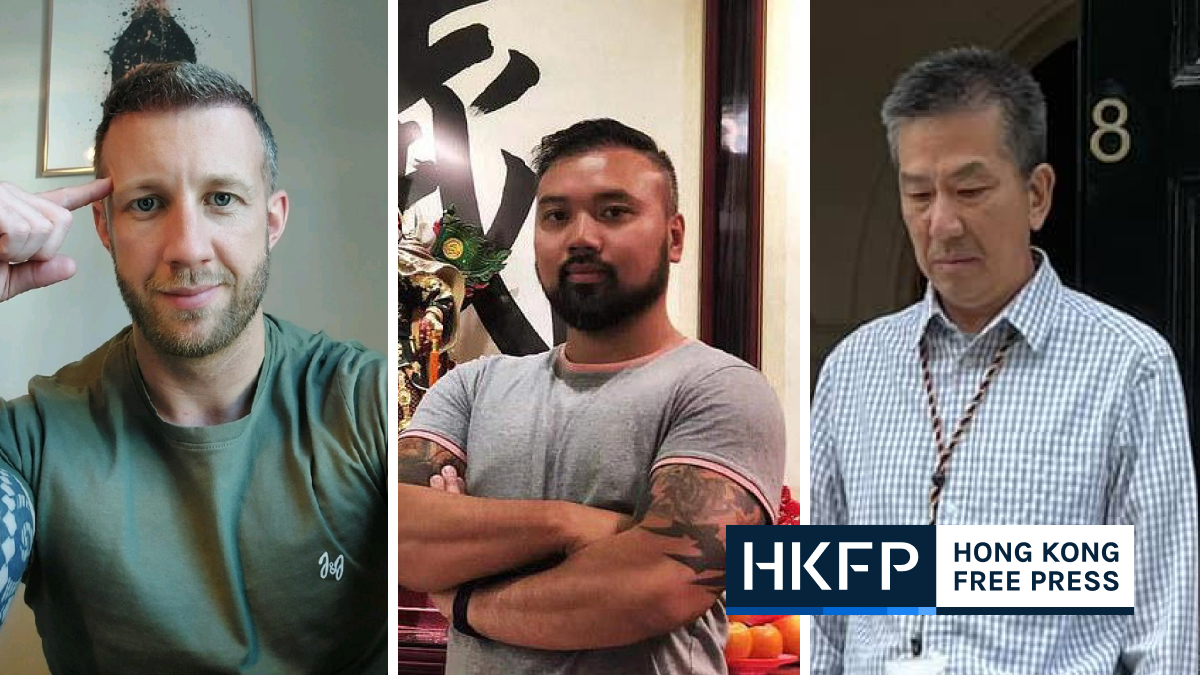A radical group in Hong Kong spent over HK$100,000 to acquire around 100 petrol bombs per confrontation during the protests and unrest in 2019, a court has heard.

Prosecution witness Wong Chun-keung, leader of the group named “Dragon Slayers,” also testified on Monday that his group formed in August 2019 as a team of “elite” violent protesters which targeted the police during confrontations. Wong said they were financed by unidentified professionals such as lawyers, lawmakers, and journalists in the city.
Seven people are standing trial at the High Court over an alleged bomb plot to murder police officers during a rally on December 8, 2019. The 60-day jury trial is the first time prosecutors invoke the city’s United Nations (Anti-Terrorism Measures) Ordinance.
Protests erupted in June 2019 over a since-axed extradition bill. They escalated into sometimes violent displays of dissent against police behaviour, amid calls for democracy and anger over Beijing’s encroachment. Demonstrators demanded an independent probe into police conduct, amnesty for those arrested and a halt to the characterisation of protests as “riots.”
Wong, allegedly the leader of the plot, agreed to testify against the seven after earlier pleading guilty to the offences. A tall, broadly-built man in his 20s, Wong spoke Cantonese on Monday as he gave evidence under the examination of prosecutor Juliana Chow.
The witness said he was a 20-year-old construction worker in 2019 and he joined the mass rally on June 12 that year in opposition to the extradition bill.
‘Dizzy with success’
Wong said he quit his job after the Yuen Long mob attack in July to focus on the protests. He then met Yim Man-him, a defendant in the case, who invited him to join a group of 30-odd “front-line” protesters based in Tsuen Wan.
That group became the “Dragon Slayers” after a march in Tsuen Wan on August 25, Wong said. Following the demonstration, they took to Yi Pei Square in the same district to retaliate over an earlier incident which saw a protester sustain serious knife injuries inflicted by an alleged gang based in that area.

“We urged and incited other protesters to sweep Yi Pei Square. The situation could be said to be out of control, as we also refurbished shops that were irrelevant,” Wong said, adding that, by “refurbish,” he meant vandalism.
“Real and fake reporters were livestreaming us, which – in effect – provided cover for us to escape,” he said. “We called that night the Yi Pei Square incident, and we felt an intense thrill as it was widely reported by the media.”
“I would describe us becoming dizzy with success, with our victorious retaliation against the Tsuen Wan gang. We needed a name after the fame, and we decided to call ourselves ‘Dragon Slayers’ after discussion among members,” he told the court.
“Dragon Slayers” meant they could “crush and beat” the police’s Special Tactical Contingent, an elite anti-riot squad also nicknamed the “Raptors,” Wong said.

The group also downsized to about 10 elite members as they dissuaded “uncommitted, female, or thin” members from continuing, he added.
During Monday’s hearing, Wong named four defendants – Cheung Chun-fu, Cheung Ming-yu, Christian Lee, and Yim – as members of the group.
The four, together with Justin Hui and Lai Chun-pong, have pleaded not guilty to conspiring to commit a bombing of prescribed objects under the anti-terrorism law. They face life behind bars if convicted.
The seventh defendant, Lau Pui-ying, stands accused of conspiring to provide or collect property to commit terrorist acts. The charge carries a maximum sentence of 14 years in jail.
‘Balance of force’
Wong on Monday also told the court that he became acquainted with Ng Chi-hung, another alleged leadership figure in the plot, at a karaoke session in Mong Kok in late-July 2019.
The court previously heard that Ng was responsible for importing firearms and making explosives for the scheme. Ng has pleaded guilty to the charge.
Wong said there were five other men whom he believed were members of Ng’s protest group at that gathering, and that they were planning to import guns from abroad and organise military-style training.

Ng later invited “Dragon Slayers” on a free trip to Taiwan, where they would be trained by a retired soldier about military tactics, Wong said, adding that Cheung Chun-fu joined the trip as the sole member from his team.
Wong also recalled a meeting at the Hong Kong University of Science and Technology (HKUST) around late-August or early-September that year. Wong said that was a meeting for “front-line” radical protesters and its participants included Ng’s team, another group named “Spider,” and an unaffiliated man called “Tiger boy.”
Ng raised the asymmetrical level of force between the police and protesters at the time and spoke of how the “resistance could only move on if there was a balance of force” during the HKUST meeting, Wong said.
“He also revealed that his team would bring in firearms, and he wanted other front-line teams to step up their equipment… Also, there would be a masterplan further down the line to kill police with the firearms,” he added.
Petrol bombs
The court heard that “Tiger boy” supplied “Dragon Slayers” with petrol bombs they ordered before each of their planned attacks on the police, and that they were the biggest expenses for the group.
“100 petrol bombs plus the transportation fees would cost over HK$100,000, and that did not include my previous payments for [Tiger boy] to set up a petrol bomb factory,” Wong said.

He said that 100 petrol bombs were a “minimum” each time his team engaged in a confrontation with police, while raw materials and the factory cost them another HK$100,000 or so.
Wong added that the petrol bombs would be placed at a location near a planned rally where only he knew in advance, and that all members of his team hurled them during confrontations.
Separately, he said that – after the team was created – he met a self-proclaimed secondary school teacher who introduced him to unidentified financiers.
He said “Dragon Slayers” gained fame after interviews with Apple Daily and Stand News, both now-shuttered media outlets facing sedition trials in the city.
He instructed Christian Lee to edit a promotional video for “Dragon Slayer” and Lau Pui-ying to post it onto LIHKG, a Reddit-like internet forum popular among protesters.
“It was relatively effective to raise money using the name of Dragon Slayers,” he said.
The trial continues on Tuesday.
Support HKFP | Policies & Ethics | Error/typo? | Contact Us | Newsletter | Transparency & Annual Report | Apps
Help safeguard press freedom & keep HKFP free for all readers by supporting our team
























